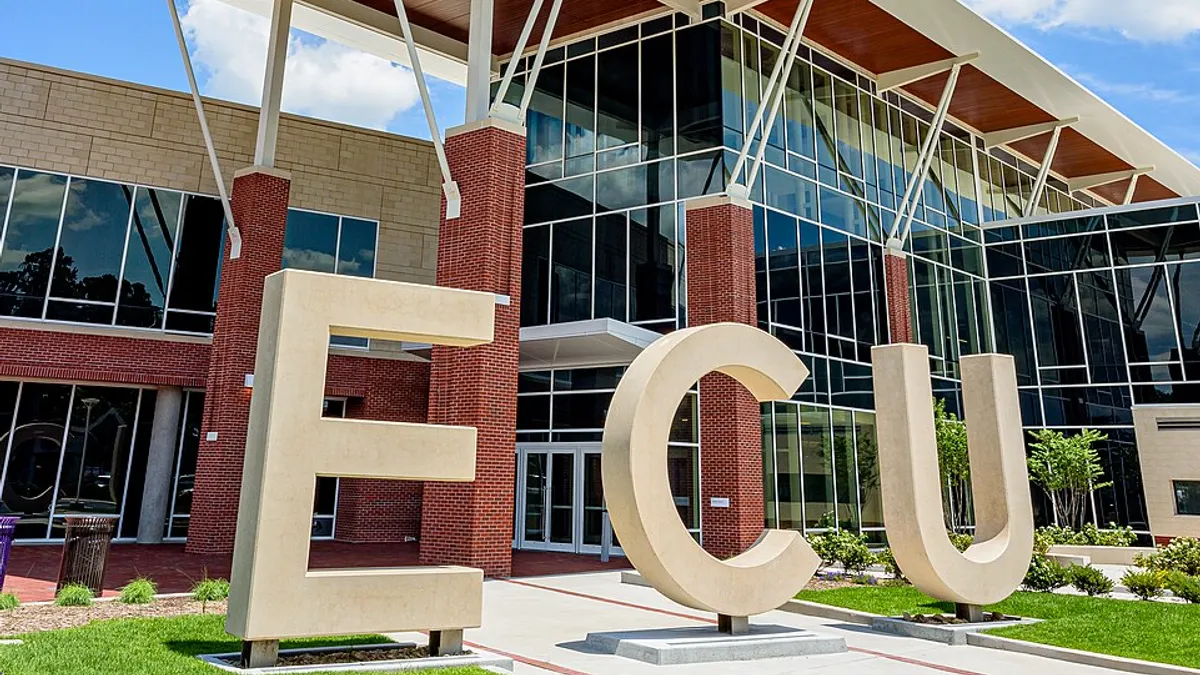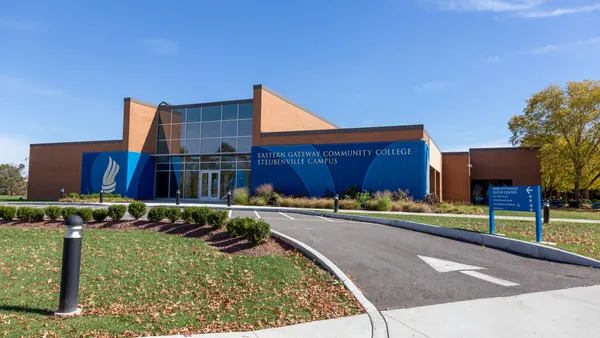Dive Brief:
- East Carolina University is looking to cut $25 million from its budget over the next three years as it wrestles with declining enrollment and a changing higher education landscape.
- The cuts represent about 2% of the North Carolina university’s budget. It’s aiming for $5 million in savings for the 2025-26 academic year, of which administrators have identified $4.2 million, the university said Thursday in a news release.
- The public institution plans to reach its three-year savings goal “through permanent reductions, academic program optimization, and organizational adjustments,” it said.
Dive Insight:
Over just three years between 2020 and 2023, ECU’s fall head count declined 7% to 26,785 students.
Many colleges have faced such enrollment woes, and the university invoked that common experience, noting “shifting demographics, including fewer graduating high school students in the years ahead.”
However, in North Carolina, as in much of the South, the population of high school graduates is actually expected to grow. In its latest estimates, the Western Interstate Commission for Higher Education forecast a 6% increase in high school graduates in the state from 2023 to 2041.
That said, ECU’s experience tracks with another national trend: regional public universities struggling while state flagships grow. University of North Carolina at Chapel Hill, for example, added about as many students — roughly 2,000 — as ECU lost between 2020 and 2023.
With growth in expenses outpacing tuition and fee revenue, the university’s operating loss in fiscal 2024 expanded by 43.2% year over year to $415.5 million. The operating loss does not factor in the university's state appropriations and aid, which reached $368.7 million in fiscal 2024, and other nonoperating revenue.
As it adapts, the university is looking to reallocate its resources to high-demand programs. ECU pointed to its nursing college, where it says it has a competitive pool of prospective students.
“We have an opportunity to fuel an expansion through reinvesting resources,” the university said of its nursing programs. It’s also looking to grow its online programs.
Enrollment trends at ECU determine not just tuition revenue but also state funds. In its release, the institution noted that North Carolina’s state funding formula bases appropriations on the number of credit hours state residents take at a public college.
“Simply put, ECU could grow in total student population but see a reduction in appropriated funds because out-of-state students are not calculated in the funding model for credit hours,” the university said.
As ECU grapples with its budget, working groups at the university are reviewing the university’s academic programs as part of a fiscal health initiative. Provost Christopher Buddo is meeting with deans and department chairs to “discuss next steps for programs with low productivity,” ECU said in the release.
The university is also trying to draw savings from operational and organizational restructuring. For instance, it plans to merge two libraries into one, and it is making changes to its information technology and employee-related units, including human resources.
Clarification: This article has been updated to include more information about East Carolina University's financial status in fiscal 2024.












